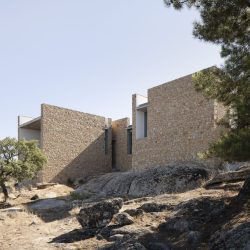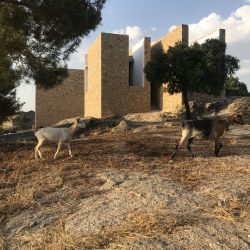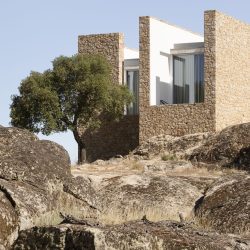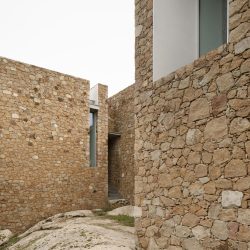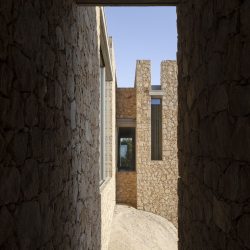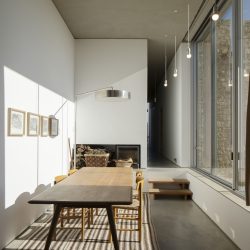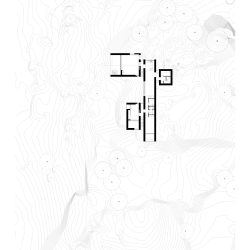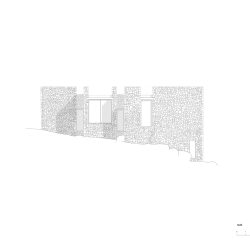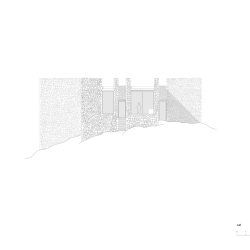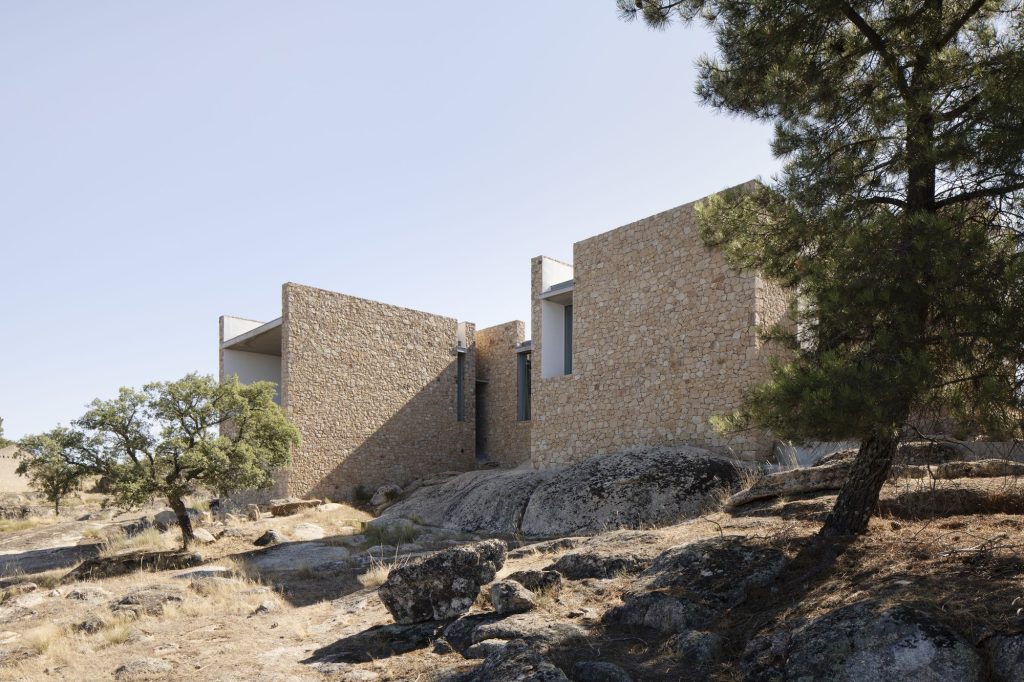
Atelier Landauer . photos: © Tiago Casanova
Located on the western edge of Portugal’s Serra de Sao Mamede, the site offers a slightly overhanging view over the Alentejo plain. A flat alley set between two large granite massifs gives access to the house. It’s extended by a natural ramp at the foot of an imposing rock. The house-studio is perfectly oriented on the North-South axis.
Built by local craftsmen, the walls are made of the same granite as the rock on which they stand. There are no lintels on the façades: for each opening, the walls are interrupted all the way to the top, revealing, at constant height, the rim of the upper concrete slab. To preserve the protective presence of the stone, the pipes have been placed inside. Rainwater is collected in a cistern beneath the house.
The house-studio has been designed as a group of rooms. Each of these rooms refers to a primitive archetype: a dolmen, a menhir, a megaron, a partially covered enclosure. The dolmen – a long, linear room – links the three other rooms. It has been compressed to its maximum width. Bordered by stones on both sides, the interstices between the rooms create an incompressible gap between the thres¬holds. Each time you move from one room to the next, you can also consider leaving the house.
Between the thick granite walls of each room, low-profile slabs convert the inters¬tices into solar chimneys. Direct openings to these volumes of warm, west-facing air are provided at the top of the rooms. Adjustable louvers modulate the convec¬tive movement of the air entering through the northern façades. This principle is entirely passive and works even when the house-studio is unoccupied.
_
location Castelo de Vide, Portugal
client private
surface 130 m²
calendar 2017-2024
architect Atelier Landauer – Paul Landauer
contributors Murielle Dumas, Axel Galzin, Juliette Hennequin,
Emilien Josseau, Rachel Jozefowicz, Amilcar Segarra
partners Sophie Brindel-Beth engineer environnement,
José Calha engineer structure,
Dalila et Luis Calado operation architects
craftmen Manuel Caleiro (concrete structure),
Carlos Ramos (stone walls),
Joao Botelheiro (aluminium windows),
Decoter (technical portions)
photos Tiago Casanova

